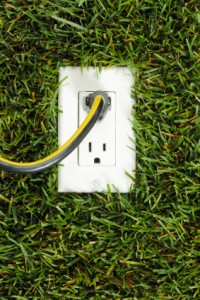 Improving home energy efficiency and building more sustainable housing is no longer a trend — it’s mainstream. As a professional home builder, we feel it’s important to keep up on emerging technologies that may soon help our clients save money, improve comfort and reduce our impact on the environment.
Improving home energy efficiency and building more sustainable housing is no longer a trend — it’s mainstream. As a professional home builder, we feel it’s important to keep up on emerging technologies that may soon help our clients save money, improve comfort and reduce our impact on the environment.
In the spirit of learning about these new technologies, we profile a rising star in the world of heating and air conditioning:
Geothermal (or “ground-source”) heating and cooling systems. Simply, a geothermal system uses the temperature of the ground to condition the air that is distributed through the house using conventional ductwork.
To transfer ground temperature to the home’s central air distribution system, a closed loop of narrow, flexible pipe is installed at least 8 feet underground, vertically or horizontally. That’s exactly how conventional, air-sourced heat pumps work, except that those systems use the temperature of the ambient outdoor air, which is far less predictable and constant than underground temperatures.e temperature of the ground is about 68 degrees. Conductive, non-toxic fluid is pumped through the pipe and is heated or cooled (depending on its temperature) by the constant temperature of the ground. When that fluid returns to the surface, it transfers its temperature to the air being blown into the home’s ductwork.
In winter, for instance, if the thermostat is set at 72 degrees, the heating coils in the pump only need to boost the incoming ground-conditioned, 68-degree fluid by a few degrees to achieve the desired temperature. The outdoor air temperature that day, however, is likely much colder, which requires far more energy from the pump’s heating coils to warm it sufficiently.
Because this type of ground-source system requires far less supplemental heating or cooling measures to achieve desired indoor temperature and comfort levels, it uses less energy. In turn, there’s less wear and tear on the heat pump, allowing it to operate at optimum efficiency for a longer period of time and with less maintenance.
Cost and payback: Until 2016, the Federal Government is offering a 30% tax credit on geothermal systems with no upper limit. This covers both the cost and installation of the units. These credits apply to both new construction and existing homes. The cost to install a geothermal system and the savings vary. Hypothetically, if a Geothermal system costs twice as much as a conventional air-sourced system, and cuts the monthly energy use and cost in half, there will be a substantial return on investment within a few years.
People with geothermal systems also report better and healthier indoor comfort, especially in the height of summer or winter when a conventional heat pump has a hard time conditioning the outside air to the desired indoor temperature.
Geothermal heating and cooling systems may not be for everyone or every new-home condition, but they are a proven, energy-efficient option that delivers better performance and lessens environmental impact.
There are several site specific considerations when planning a geothermal system. If you would like to learn if your site is conducive to geothermal please give us a call or
CLICK.
[action]
Estes Builders is an award-winning design build firm that specializes in custom homes in Western Washington. We have earned more than 130 customer testimonials and a reputation as Western Washington’s most trusted custom home builder. We build custom homes in Sequim, Port Angeles, Port Townsend, Port Ludlow, Bainbridge Island, Kingston, Silverdale, Port Orchard and surrounding areas. Contact us for a FREE Project Analysis to discuss your project.]]>
 Improving home energy efficiency and building more sustainable housing is no longer a trend — it’s mainstream. As a professional home builder, we feel it’s important to keep up on emerging technologies that may soon help our clients save money, improve comfort and reduce our impact on the environment.
Improving home energy efficiency and building more sustainable housing is no longer a trend — it’s mainstream. As a professional home builder, we feel it’s important to keep up on emerging technologies that may soon help our clients save money, improve comfort and reduce our impact on the environment.

